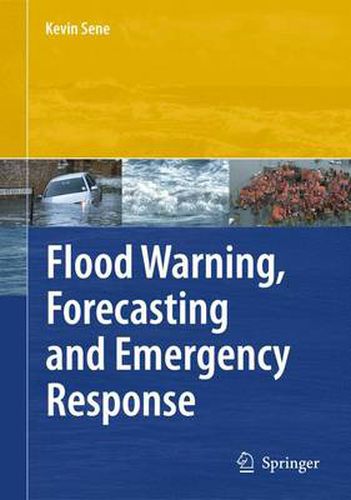Readings Newsletter
Become a Readings Member to make your shopping experience even easier.
Sign in or sign up for free!
You’re not far away from qualifying for FREE standard shipping within Australia
You’ve qualified for FREE standard shipping within Australia
The cart is loading…






This title is printed to order. This book may have been self-published. If so, we cannot guarantee the quality of the content. In the main most books will have gone through the editing process however some may not. We therefore suggest that you be aware of this before ordering this book. If in doubt check either the author or publisher’s details as we are unable to accept any returns unless they are faulty. Please contact us if you have any questions.
Recent flood events in Europe, the USA and elsewhere have shown the devastating impact that flooding can have on people and property. Flood warning and forecasting systems provide a well-established way to help to reduce the effects of flooding by allowing people to be evacuated from areas at risk, and for measures to be taken to reduce damage to property. With sufficient warning, temporary defences (sandbags, flood gates etc) can also be installed, and river control structures operated to mitigate the effects of flooding.
Many countries and local authorities now operate some form of flood warning system, and the underlying technology requires knowledge across a range of technical areas, including rainfall and tidal detection systems, river and coastal flood forecasting models, flood warning dissemination systems, and emergency response procedures.
This book provides a comprehensive account of the flood forecasting, warning and emergency response process, including techniques for predicting the development of flood events, and for issuing appropriate warnings. Related topics, such as telemetry and information systems, and flood warning economics, are also discussed. For perhaps the first time, this book brings together in a single volume the many strands of this interesting multidisciplinary topic, and will serve as a reference for researchers, policy makers and engineers. The material on meteorological, hydrological and coastal modelling and monitoring may also be of interest to a wider audience.
$9.00 standard shipping within Australia
FREE standard shipping within Australia for orders over $100.00
Express & International shipping calculated at checkout
This title is printed to order. This book may have been self-published. If so, we cannot guarantee the quality of the content. In the main most books will have gone through the editing process however some may not. We therefore suggest that you be aware of this before ordering this book. If in doubt check either the author or publisher’s details as we are unable to accept any returns unless they are faulty. Please contact us if you have any questions.
Recent flood events in Europe, the USA and elsewhere have shown the devastating impact that flooding can have on people and property. Flood warning and forecasting systems provide a well-established way to help to reduce the effects of flooding by allowing people to be evacuated from areas at risk, and for measures to be taken to reduce damage to property. With sufficient warning, temporary defences (sandbags, flood gates etc) can also be installed, and river control structures operated to mitigate the effects of flooding.
Many countries and local authorities now operate some form of flood warning system, and the underlying technology requires knowledge across a range of technical areas, including rainfall and tidal detection systems, river and coastal flood forecasting models, flood warning dissemination systems, and emergency response procedures.
This book provides a comprehensive account of the flood forecasting, warning and emergency response process, including techniques for predicting the development of flood events, and for issuing appropriate warnings. Related topics, such as telemetry and information systems, and flood warning economics, are also discussed. For perhaps the first time, this book brings together in a single volume the many strands of this interesting multidisciplinary topic, and will serve as a reference for researchers, policy makers and engineers. The material on meteorological, hydrological and coastal modelling and monitoring may also be of interest to a wider audience.